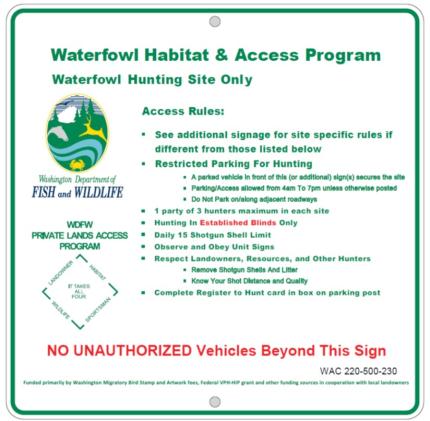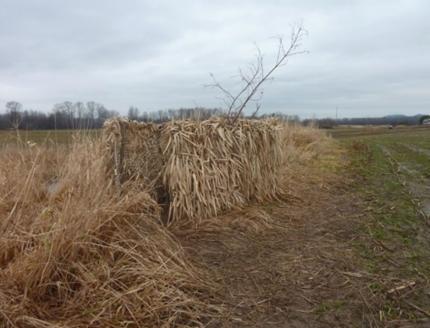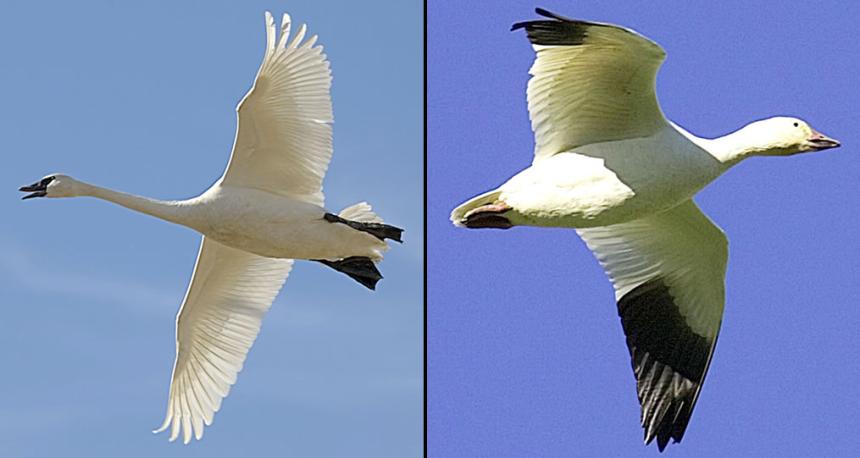The Waterfowl Habitat & Access Program (WHAP) is designed to work with landowners to allow limited access to private property through improvements to waterfowl habitats. It absolves the landowners of managing hunting on their land, while increasing hunting opportunities for the public. The Washington Department of Fish and Wildlife (WDFW) works with the landowner to lay out each unit and ensure a safe hunting environment, while also taking landowner concerns and wishes into account.
WDFW compensates each landowner for use of the property for hunting purposes. Funds are provided by those who have purchased Washington state hunting licenses and applied for special permits. Additional funding is provided by the U.S. Department of Agriculture through the Voluntary Public Access and Habitat Improvement Program.
Each WHAP site is selected based on its potential to provide waterfowl habitat and desirable hunting access and the landowner’s willingness to participate in the program. WDFW private lands staff members work closely with landowners to provide the best hunt scenario possible. When department staff member negotiate unit selection with landowners, two points are made clear:
- Agricultural crop preparation and harvest supersede availability of the unit to the public.
- Parking and blind location will get landowner approval before public access commences.
Hunters should keep these points in mind before utilizing WHAP.
Hunting access
WHAP is designed to increase hunting opportunity in the state on land previously unknown or inaccessible to the general public. It focuses on providing the public with duck and goose hunting in the North Puget Sound area. In 2020-21, WHAP provided public access to 67 sites and more than 3,000 acres throughout Whatcom, Skagit, and north Snohomish counties.
To sign up for WHAP sites and reserve a hunt date, login to the Hunt by Reservation system.

Program rules
To ensure the long term success of WHAP, hunters must obey boundary signs, pick up litter, and obey access rules. Access to these sites -- as well as the continuation of the program -- is in the hands of those using them.
Partner cooperation
WDFW works with a variety of landowners in this program. Many of them are hunters or have hunter friends and/or family, and know how difficult it can be to gain access to private lands. The grounds within the program are only available because of the landowners’ support of public hunting and good faith that their property will not be abused. Treating the landowners and the property with respect will go a long way in retaining the enrolled landowners’ support.
Enforcement and boundary compliance
WDFW personnel regularly check on the WHAP units. All landowners, as well as their neighbors, watch their land and those hunting on it, and will contact WDFW with information on violators.

Hunters can help by using the following resources:
- Report violators
- Washington State Patrol: (360) 757-1175
- Review the Washington hunting regulations
The continued success of the program depends on hunters treating landowners and hunt areas with respect.
Hunting scenarios
WDFW-private landowner agreements are seasonal as crop rotation and preparation occur on either side of the waterfowl season. Additionally, differing topography, crop/cover type, and overall location offer varying types of habitat at each hunt site. Because of this, most of the blinds at the hunt units are minimally constructed and similarly made. The most common of the WHAP sites is a simple brushed wire on t-posts with a wooden base. Each is then further brushed with surrounding cover as to better conceal the blind. Hunters may bring seating to these sites as long as it’s removed at the end of the hunt.
Swans in the area
Whatcom, Skagit, and Snohomish counties hold many waterfowl species that could be confused with snow geese. Several thousand trumpeter and tundra swans reside throughout the three counties from mid-fall through spring. Swans are closed to harvest in Washington.
Waterfowl hunters must be able to tell the difference between mature or juvenile swans and their snow goose counterparts. That can be a challenge for inexperienced hunters. With proper species identification and patience, there should be little confusion between the species. Snow geese have black wingtips, swans do not. Hunters should review waterfowl identification materials to sharpen their skills before the season begins.
Under both state and federal laws, it is illegal to harvest, harm, or harass swans under any circumstances.
